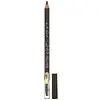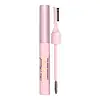What's inside
What's inside
 Key Ingredients
Key Ingredients

No key ingredients
 Benefits
Benefits

 Concerns
Concerns

 Ingredients Side-by-side
Ingredients Side-by-side

Silica
AbrasiveMica
Cosmetic ColorantDimethicone/Divinyldimethicone/Silsesquioxane Crosspolymer
HumectantPolymethyl Methacrylate
Synthetic Fluorphlogopite
Pentylene Glycol
Skin ConditioningPEG-10 Dimethicone
Skin ConditioningCaprylyl Glycol
EmollientTriethyl Citrate
MaskingMagnesium Aluminum Silicate
AbsorbentPhenylpropanol
MaskingMethylpropanediol
SolventAlgin
MaskingDehydroacetic Acid
PreservativeEthylhexylglycerin
Skin ConditioningSodium Polyacrylate
AbsorbentCitric Acid
BufferingDipropylene Glycol
HumectantGlyceryl Caprylate
EmollientTocopherol
AntioxidantIron Oxides
CI 77891
Cosmetic ColorantCI 77163
Cosmetic ColorantSilica, Mica, Dimethicone/Divinyldimethicone/Silsesquioxane Crosspolymer, Polymethyl Methacrylate, Synthetic Fluorphlogopite, Pentylene Glycol, PEG-10 Dimethicone, Caprylyl Glycol, Triethyl Citrate, Magnesium Aluminum Silicate, Phenylpropanol, Methylpropanediol, Algin, Dehydroacetic Acid, Ethylhexylglycerin, Sodium Polyacrylate, Citric Acid, Dipropylene Glycol, Glyceryl Caprylate, Tocopherol, Iron Oxides, CI 77891, CI 77163
Ingredients Explained
These ingredients are found in both products.
Ingredients higher up in an ingredient list are typically present in a larger amount.
Citric Acid is an alpha hydroxy acid (AHA) naturally found in citrus fruits like oranges, lemons, and limes.
Like other AHAs, citric acid can exfoliate skin by breaking down the bonds that hold dead skin cells together. This helps reveal smoother and brighter skin underneath.
However, this exfoliating effect only happens at high concentrations (20%) which can be hard to find in cosmetic products.
Due to this, citric acid is usually included in small amounts as a pH adjuster. This helps keep products slightly more acidic and compatible with skin's natural pH.
In skincare formulas, citric acid can:
While it can provide some skin benefits, research shows lactic acid and glycolic acid are generally more effective and less irritating exfoliants.
Most citric acid used in skincare today is made by fermenting sugars (usually from molasses). This synthetic version is identical to the natural citrus form but easier to stabilize and use in formulations.
Read more about some other popular AHA's here:
Learn more about Citric AcidMagnesium Aluminum Silicate is a type of silica. It comes from naturally occuring minerals such as silicate ores and clay.
Magnesium aluminum silicate is used for enhancing texture and as an absorbent. Due to its large molecular size, it is unable to be absorbed into the skin.
Like other types of silica, this ingredient can be used to thicken a product. As an absorbent, it may be used to absorb extra water or help prevent clumping.
Although “aluminum” in an ingredient name can raise red flags for some consumers, the form and usage context matter significantly. For typical topical applications, there is no substantial evidence of health risks - such as cancer, neurotoxicity, or systemic “aluminum overload.”
Learn more about Magnesium Aluminum Silicate